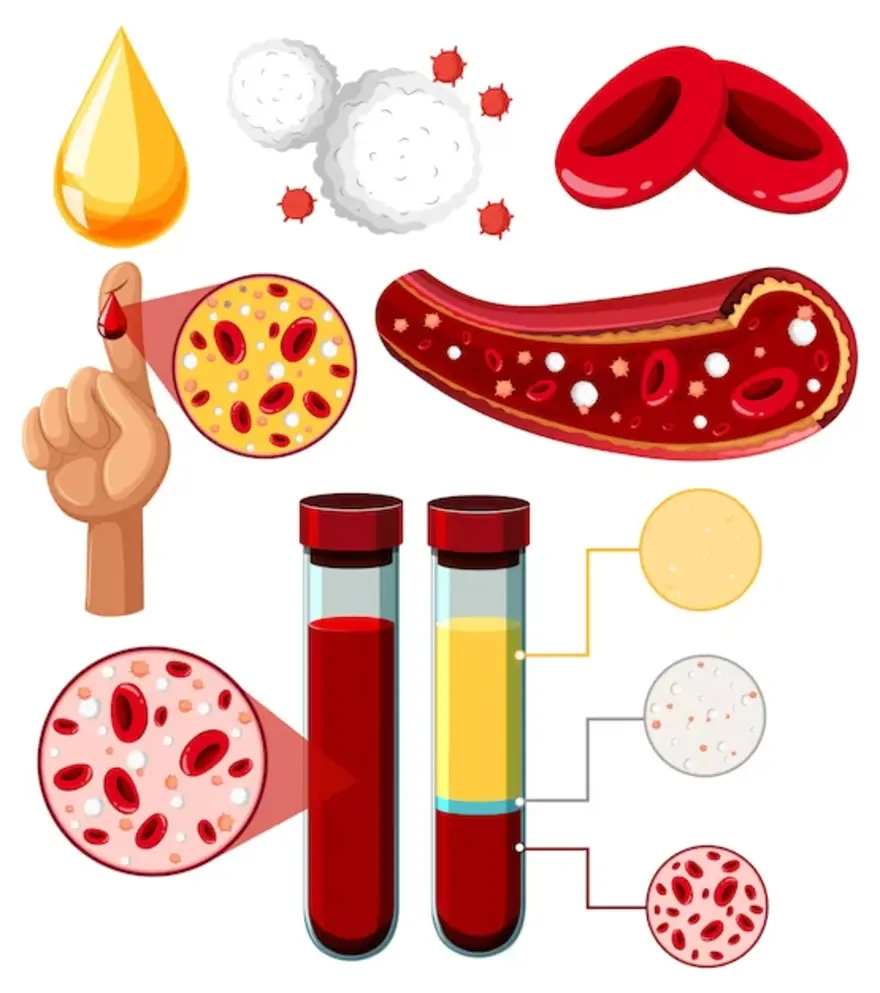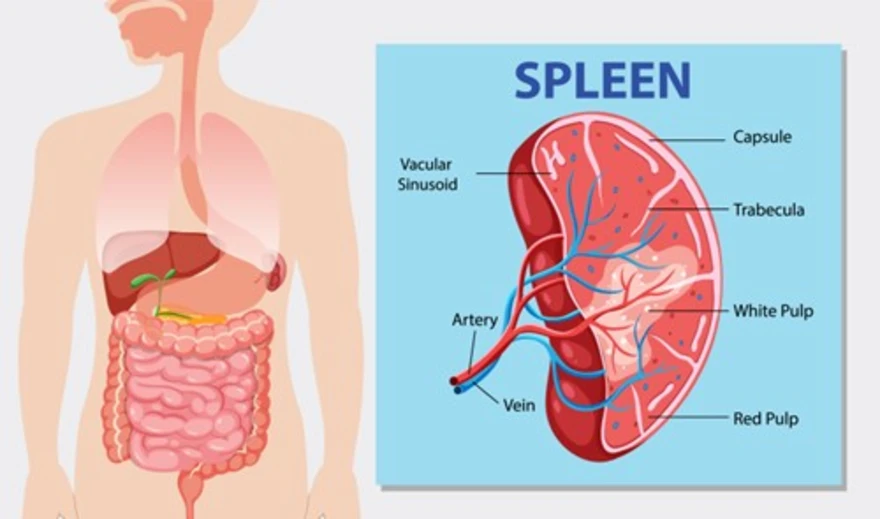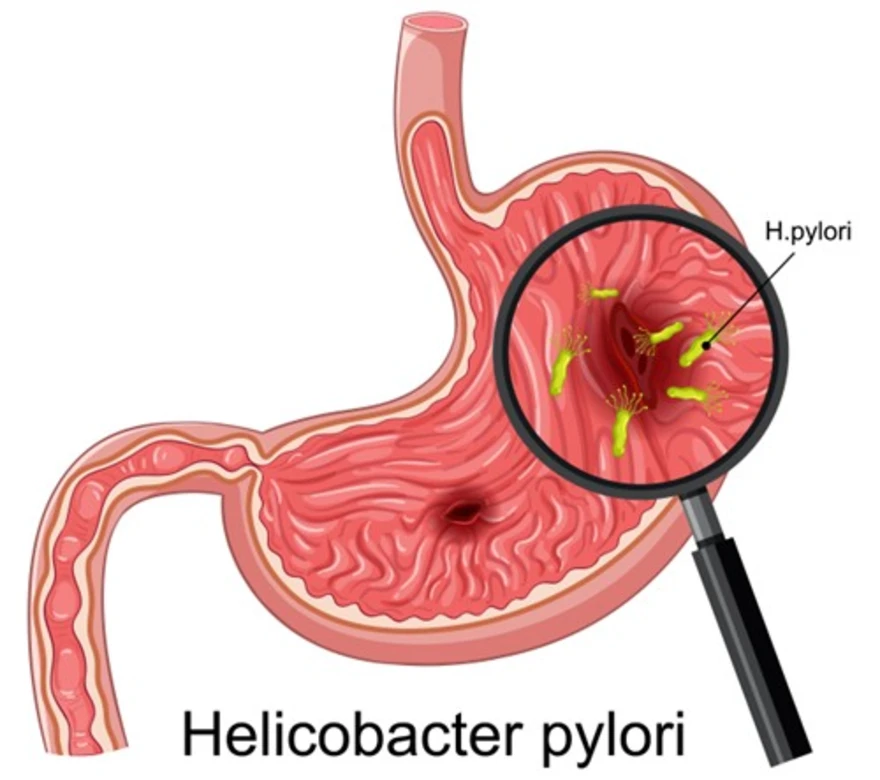Preventive Healthcare
10 Important Facts About Typhoid Fever You Should Know

Table of Contents
Typhoid fever is an infectious illness caused by Salmonella typhi infection. Typhoid causes recurrent fever with chills and severe digestive anomalies, among other prevalent symptoms. Also known as enteric fever, typhoid can spread through contaminated food and water sources or poor hygienic practices if staying with a typhoid patient.
Read this blog to learn more about how typhoid fever causes damage to your body and what preventive measures you may take against it.
List of 10 Important Facts about Typhoid Fever You Should be Aware of
Typhoid causes serial symptoms as the illness progresses with marked deterioration of your health. Here's more about the prognosis of typhoid:
- Typhoid Fever is not a Contagious Illness
- Typhoid Fever Causes Characteristic Skin Rashes
- Typhoid Spreads Through Contaminated Food and Water
- Children are More Prone to Typhoid than Adults
- Poor Sanitation is a Leading Cause of Typhoid Infection
- Typhoid Infection is Diagnosed Using the Widal Test
- Typhoid Fever Causes Antibiotic Resistance
- Inoculation is Available against Typhoid Infections
- Untreated Typhoid Causes Extensive Organ Damage
- Typhoid Bacteria may Incubate in your Body After Recovery
1. Typhoid Fever is not a Contagious Illness
Typhoid fever is an infectious disease that doesn't spread through touch with an infected patient. Unlike HIV, kissing or body contact doesn't spread typhoid bacteria, but it's through the presence of germs on substances of daily usage.
Typhoid causes the spreading of bacteria all over the place from poor hygienic practices. It's best to sanitise everything around a typhoid patient without complete isolation.
2. Typhoid Fever Causes Characteristic Skin Rashes
Typhoid fever causes marked pink spots like rashes all over your body. Look for the red rashes present on your abdomen and chest that will manifest between the second and fourth week with a serial high fever. It appears like a flush on your skin with a prominent flat appearance.
These typhoid spots don't last beyond a week without leaving pox-like marks. Besides, these red and pink rashes don't itch, and it's best to consult your physician before self-administration.
3. Typhoid Spreads Through Contaminated Food and Water
Salmonella typhi is a gram(-) bacteria that contracts through contaminated food and water. Typhoid causes infection if you dine at unhygienic locations or share items consumed by a typhoid patient. Individuals consuming unsterilised raw food (fruits, vegetables), unboiled milk, and food cooked with untreated water are vulnerable to infection.
Additionally, unsterilised drinking water from unknown sources makes you vulnerable to infection. You can prevent contracting typhoid by abstaining from consumption at questionable sources.
4. Children are More Prone to Typhoid than Adults
Most children, especially toddlers, tend to suck their fingers while roaming on the floor or whenever convenient. It makes them vulnerable to contracting typhoid as the floor is left unsanitised, given young children lack an understanding of hygiene.
Given the menace typhoid fever causes on the nascent immunity of your child, ensure hygienic standards around your baby, besides keeping them off the floor. In addition, developing hygiene practices in your children from a tender age helps them stay safe from contracting typhoid in the first case.
5. Poor Sanitation is a Leading Cause of Typhoid Infection
Typhoid causes incessant breakouts in locations plagued by poor sanitation practices. Factors like clogged drainage or sharing washrooms with typhoid patients spike your chances of getting infected without the slightest clue.
Also, poor sanitation makes you vulnerable to UTIs, which can lead to chronic health complications, including urinary bladder cancer.
6. Typhoid Infection is Diagnosed Using the Widal Test
Typhoid fever causes extensive H and O antibodies in response to underlying Salmonella typhi infections. The Widal test includes a pathological culture of suspected body fluid samples (blood, stool, and urine). It confirms typhoid if the agglutination of the blood sample is positive.
Widal Test for Typhoid by Agglutination will show a reduced concentration of H and O antibodies. Consult your physician if you receive a false positive result after complete recovery.
7. Typhoid Fever Causes Antibiotic Resistance
In recent years, Salmonella typhi has shown resistance against chloramphenicol, streptomycin, and tetracycline, among prevalent first-line antibiotics. However, controlled applications of azithromycin and ceftriaxone have shown complete cures against typhoid infection.
Given profuse antibiotic exploitation, consult your physician on your antibiotic history, as typhoid causes proliferation against resistant drugs. You can also inquire about the widal test price to understand diagnostic costs better before proceeding with treatment.
8. Inoculation is Available against Typhoid Infections
Though typhoid causes havoc, early vaccination offers children protection against Salmonella typhi. For toddlers, typhoid vaccination is available for children two years old and above; the vaccine offers recurrent protection with biennial booster doses. Oral typhoid vaccination is available for children aged six years and above. It includes one dosage/month and provides immunity against typhoid for nearly five years.
These ensure comprehensive coverage against typhoid upon accidental exposure. For complete protection, ensure thorough hygienic practices.
9. Untreated Typhoid Causes Extensive Organ Damage
Typhoid fever causes life-threatening conditions like encephalitis and severe internal bleeding. Recurrent infections cause intestinal walls to leak undigested content into the body cavity, leading to violent immune reactions called septicemia. A patient may succumb to sepsis reaction in less than 24 hours without prompt clinical support.
In addition, typhoid is a bacterial infection that spreads rapidly across the bloodstream, triggering multiorgan failure. Consult your physician for immediate diagnosis if you experience abnormal fever or skin rashes.
10. Typhoid Bacteria may Incubate in your Body After Recovery
Salmonella typhi shows symptoms within a week of contracting the victim's body, meaning typhoid fever causes infection proliferation without prompt treatment. Upon recovery, some people may have bacteria for years and become a spreader like Mary Mallon without showing potential complications.
Follow the mentioned preventive practices against typhoid, like following thorough hygiene standards, regular clinical follow-ups, maintaining optimum isolation during illness, and ensuring complete recovery.
FAQ’s
Is Typhoid Contagious?
Yes, typhoid fever is contagious. It spreads through contaminated food and water, or through direct contact with the feces of an infected person, highlighting the need for proper hygiene and sanitation to prevent its transmission.
What does a Typhoid Rash Look Like?
A typhoid rash, commonly known as "rose spots," consists of small, flat pink or rose-colored marks on the abdomen or chest. These spots may fade when pressed and vary in size, usually appearing during the second week of the illness.
What are The Symptoms of Typhoid in Adults?
In adults, typhoid symptoms typically begin with a gradual high fever which can last for weeks without treatment. Common symptoms include headache, abdominal pain, loss of appetite, and fatigue. Some individuals may also experience gastrointestinal issues such as nausea, vomiting, or diarrhea, along with faint pink spots on the skin called rose spots.
Conclusion
Typhoid fever causes the unlikeliest of health complications from unhygienic lifestyle practices. While a curable condition, typhoid can severely affect the gastrointestinal tract, liver, lungs, gallbladder, and heart. Patients may require surgery to treat underlying haemorrhagic conditions. Practice paramount hygienic standards and stay inoculated to prevent future infections.
Typhoid causes high fever with recurrent intestinal complications, limiting mobility options. Need a diagnostic service offering doorstep services? Read more about Metropolis Labs, offering impeccable diagnostic reports for all pathological conditions. For more information on the Widal test for typhoid serum, visit Metropolis Labs today.


























